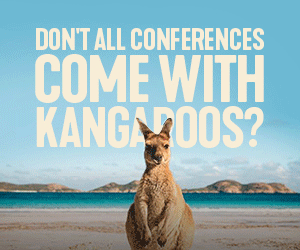How to tackle challenges in a fast-changing environment

In today’s environment, the key trends emerging in the association industry in Europe that affect association executives and leaders are driven by internal and external factors and depend on the structure of the organisation. We live in a political, economic and social context of important changes with the rise of populists, migration, terrorism threats and the Brexit. This uncertain environment is combined with competing visions for Europe. It creates confusion and impacts the future of associations. By Florence Bindelle, Secretary General, EuropeanIssuers and President, ESAE.
Over time, associations have become more professional and the required skills and competence of association leaders are increasing in numbers and variety. European association executives have therefore updated their skills and know-how in areas such as legal practice, communication, marketing, finance and social media. The European Society of Association Executives (ESAE) is a hub for association leaders and a platform for senior-level association managers in Europe who wish to broaden their perspectives and upgrade their skills in those areas.
Europe is presently where most associations meetings take place, which indicates that the association business in Europe is mature and well developed. However, most associations are not at the same stage of development. Some are startups while others have already reached maturity. There is a life-cycle effect that will shape their own challenges and opportunities and how they will address them. Let us review them.
- Cut Costs
Associations are often confronted by budget reductions, which leads EU associations to improve their “value for money” offerings to members whether they are companies, individuals or national associations. They use tools such as membership surveys to evaluate the value being offered to their members. They also measure the benefits of their activities with performance indicators such as growth and satisfaction in membership, costs saved for the industry they represent, or effectiveness of regulatory actions. They need to know their MVE (member value expectancy) and how value is created and captured.
- Think Strategy
Increasingly, EU associations must consider the importance of frequent strategic planning and governance reviews. These are two major challenges; it’s hard for association executives to ensure that the Board agrees and stays focused on the strategic issues that are higher on the agenda. Furthermore, strong consensus building and effective decision making are critical, and personal or corporate agenda should be left aside.
There is also a recent trend of association mergers and creation of new interest groups outside associations. This should be seriously considered in exercising strategic planning.
- Redefine Business Model
The financial structure of the association is not always a comfortable topic. It is rarely seen as an opportunity to analyse needs for (additional) funding for the new strategic issues. Associations nowadays are faced with growing member demands and restrained budgets, and yet less sponsorship budgets are available. While membership growth may improve resources available, an association must remain focused to serve its core constituency. European associations should continue to integrate national associations and give a more prominent role to companies at EU level.
- Keep Up with Technology
Technological developments play a significant role. The proliferation of information makes it harder to read and synthesise research and reports from the news and social media for advocacy discussions and materials. Therefore, knowledge sharing has gained importance. The development of smartphone applications has helped individuals gather information at their fingertips.
- Communicate Better
A top-notch website is also an essential tool to attract new members. How associations communicate with third parties (e.g. EU institutions, media) has evolved thanks to the use of websites and email. For example, email communication between EU officials and business associations is beneficial in exchanging key documents and positions in a timely manner. Intranet and MOAs (members-only areas) are essential tools for engaging members. However, the wide range of various electronic communication channels means that associations cannot stay complacent and staff commitment remains key.
- Expand Internationally
Some associations are keen to expand their reach internationally (e.g. in the Middle East and Asia Pacific), build capabilities, and maximise ROI in those regions. Expansion beyond Europe offers new opportunities such as access to new markets, a growing member and customer base, increasing revenue, making an impact and leaving a legacy. Increasing the membership of associations could be beneficial but can also change their priorities and increase their workload. The association might also experience a difference in engagement capacity or support from the members and the gap might grow wider.
To face these new challenges, associations need to carefully anticipate and understand these changes, and react accordingly:
- The Board needs to adapt to new realities to steer members and staff. Therefore, they should be informed not only on the association activities but also on market trends and innovations. Decisions should be made and implemented quickly.
- The staffing structure should be flexible in adapting to these changes. A clear division of roles and responsibilities between the Board and staff should be in place without overlapping. The Chairperson’s role should primarily be to manage the Board and represent the association at key decision-making events and with the media. All day-to-day activities should be delegated to the internal staff or better to outside consultants. Teams with required skills should be trained to handle a specific task (e.g. conference, website, smartphone application) and dismantled at the end of the project. Interns can also be a good solution.
- Some associations must implement a better response to corporate restructuring, reflecting the changing nature of the industries they represent. Models of membership should be regularly reviewed and adapted according to different types of memberships and fees. It can be a good idea to keep members who can still contribute to the association’s goals while they may not necessarily meet the members’ requirements. Free membership for certain institutions and faculties can also be explored.
- Lobbying activities need to be more efficient and attuned to an ever-expanding European policy agenda and a limited financial budget.
- Communication strategy needs to adapt to new information technology developments and the Internet must play a key role in the association’s communication system. New smartphone applications should also be developed.
- Association staff needs to be highly qualified and specialised (e.g. an EU affairs manager must increasingly be a communications expert). Excellent language skills, ability to navigate different cultures, and good marketing skills are highly desirable. However, the selection process can be difficult so the use of recruitment service providers is recommended.
Conclusion
Associations having to adapt to a changing environment should focus on defining “value for money” for members much more than they have done so far. Association executives and leaders need to develop KPIs (Key Performance Indicators) to measure their performance in these areas. Frequent strategic planning, governance reviews membership surveys and other tools need to be developed. Many associations need to innovate on a permanent basis to sustain their members’ interest. The effectiveness of an association greatly depends on the capacity to recognise and analyse environmental factors, and react accordingly by implementing appropriate structure and management tools.
Other Articles
About Us
Supported by the Union of International Associations (UIA), the International Association of Professional Congress Organisers (IAPCO) and the Interel Group, the global public affairs and association management consultancy, Headquarters Magazines serve the needs of international associations organising worldwide congresses.














